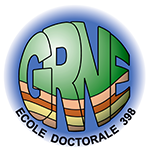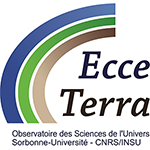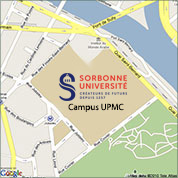Séminaire ISTeP - Lucile Bruhat
(ENS Paris)
Why make it complex, when you can make it simple? How physics-based modeling highlights key features of earthquake processes
While substantial progress has been made in understanding how and where interseismic strain accumulates on faults, enabling the identification of fault segments that are more likely to host earthquakes, the mechanical behavior of some key features of the earthquake rupture remains unclear. For instance, difficulties arise when we aim at defining the deep locked-to-creeping transition, and at estimating slip deficit in such transitional regions. Since earthquakes result from the sudden release of elastic strain along a fault interface, reasonable estimates for slip deficit, and consequent strain accumulation, are critical for earthquake hazard assessment. In this work I will present various examples of how “simple” physics-based models can help us understanding key features of earthquake physics. For instance, I will show how crack models of the locked-to-creeping transitional region enabled us to evaluate the slip and stress behavior of the deep edge of the locked region in the northern Cascadia subduction zone.
05/04/2019, Salle de conférence de l'UFR TEB (aile 46/56, 2ème étage) à 12h30
Egalement dans la rubrique
- Séminaire ISTeP - Bellanger et Hermant
- Séminaire ISTeP - Guillaume Le Hir
- Séminaire ISTeP - Armel Menant
- Séminaire ISTeP - Nicolas Grasseau
- Séminaire ISTeP - Isabelle Moretti
- Séminaire ISTeP - Jean-Arthur Olive
- Séminaire ISTeP - Louise Jeandet
- Séminaire ISTeP - Hugues Raimbourg
- Séminaire ISTeP - Baptiste Rousset
- Séminaire ISTeP - Alfonso Mucci
- Séminaire ISTeP - Anthony Jourdon
- Séminaire ISTeP - Marianne Conin
- Séminaire ISTeP - David Pyle
- Séminaire ISTeP - Vincent Strak
Chiffres clés (Mars 2025)
L'ISTeP comprend 131 membres dont :
Permanents (66)
- Professeurs : 17 (+2 PAST)
- Maîtres de conférence : 26
- Directeurs de recherche CNRS : 1
- Chargés de recherche CNRS : 1
- ITA : 19
Personnels non permanents (65)
- Collaborateurs bénévoles / émérites : 17
- Chaire de professeur junior : 1
- Enseignants-chercheurs contractuel : 2
- 1 MCF accueil en délégation
- ATER et Post-Docs : 9
- Doctorants : 32
- ITA-BIATSS : 3





